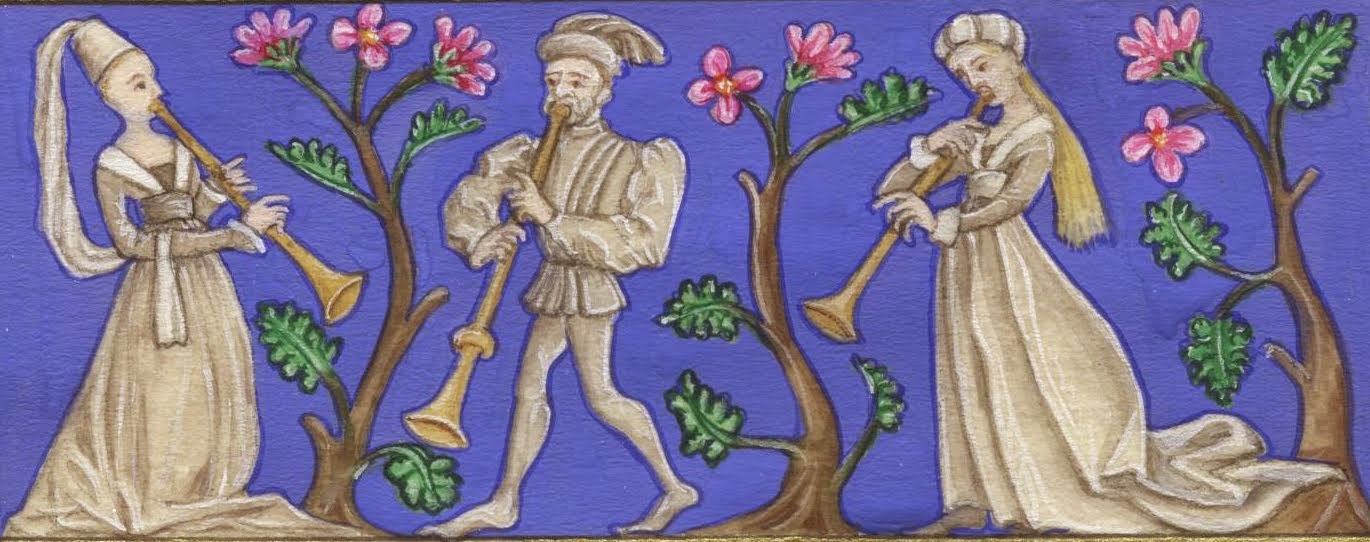[Note that if there is an option to sing, e.g. it is a cantiga with words, rather than an estampie without, this is always worth considering, even if none of the group are 'singers'. Just attempting to sing it will often make clear details of emphasis and phrasing, related to the text, that can help the instrumental performance. But for now I will assume the performance itself will be purely instrumental].
One thing often seen and heard is the 'play every time through on a different instrument' solution. This seems an obvious way to add some variety and contrast (though it can become monotonously predictable if there is always a strict alternation, and the same happens on the next piece, and the next...). It's a good starting point, but in my opinion, has some pitfalls:
- One that is my current bug-bear is when players keep putting down and picking up new instruments - something I think it highly unlikely that medieval instrumentalists ever did, unless in very unusual circumstances. The risk of coming in with an instrument that is out of tune seems reason enough alone to be wary. It is even more annoying when it is a recording and the instruments vary from lutes to shawms with the impossible volume balance being evened out in the editing suite. If you want to show off your multi-instrumentalist skills, save the new instrument for another piece! Similarly, I would like to think we are past the stage where the primary purpose of period concerts was for the audience to goggle at the biggest possible variety of unusual instruments - that's getting dangerously near to the old 'drums and fun' territory.
- For many instruments, it is not necessary to stop and start playing them to produce dynamic or other contrasts which allow the 'lead' to effectively switch from one instrument to another. And learning how to create those contrasts on your instrument is going to be a useful skill. Perhaps most problematic here are instruments such as recorders that have a more limited dynamic range - sometimes stopping and starting may be necessary to allow another instrument to show through. Of course, not using a recorder at all is probably the more medieval solution, which brings me to...
- Using the wrong set of instruments. Recorders or similar fipple pipes may have existed in the middle ages, but recorder consorts are a renaissance phenomenon. The medieval 'ensembles' depicted playing are nearly always instruments with contrasting timbres (e.g. harp and fiddle). Having said that, there are of course the famous pictures of musicians from the cantigas manuscript that show many pairs of players of identical instruments. I wouldn't want to dismiss this as just some artistic conceit, so it deserves consideration as a plausible instrumentation.
